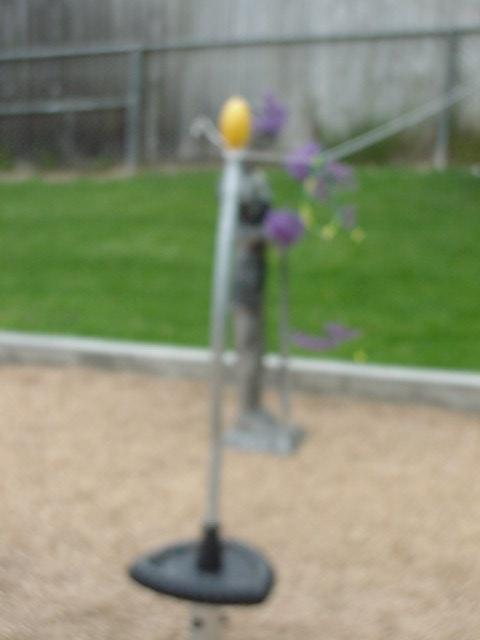Details Of Try Gpt Chat
In my view, there’s nothing that is likely to be improper with the Rigid Body itself, it more about the modeling of your door and placing it at beneath the best angle. AI has launched early beta access for Grok 2, a slicing-edge AI model that makes use of real-time information from X and employs Flux.1 to produce more dynamic and fewer filtered AI photographs. All I need to do is carry the data from a Linux ext4 partition to another disk on FreeBSD UFS. I generated 512 x 512 photos by saving the perfect picture knowledge and then upscaling the images to the desired resolutions. The point of offering data and training is that the algorithm can now do the tasks that people used to do. By providing prompt assist, personalizing interactions, and enhancing total satisfaction levels, companies can create a optimistic and seamless customer expertise. Third, it's going to assist rather a lot if you can share the unique Blend file. Only the digital version might be accessible in the mean time. Just upload a document, and Ask AI will summarize it for you. They may just hold the door in a rest place when it’s closed. I’ll send the Blend file and see if it’s what you’re on the lookout chat gpt for free.
 I managed to attain it with Rigid Body once before, however unfortunately, I didn’t save the file. I don’t think the Rigid Body is the solution. They use two different solvers on completely different clocks that don’t sync. I actually haven't any expertise with animation, and especially not with these hinges, but I found them really cool and needed to use them here. So I’m guessing you will need to have a pretty strong reference. By taking a look at the scale, I’m nonetheless guessing that it’s a cabinet, free chat gtp but by the way you’re presenting it, it appears very very similar to a home door. It’s normally constructed with a spring suspended system. Now I’m trying to do it again here, and it’s not working anymore. From what I heard, working with AMD drivers is hell not only for ML Researchers but in addition for sport builders. After putting in Supermaven as a VS Code extension, I was immediately impressed by its auto-complete strategies while engaged on my React Star Wars web site. try chatgpt free-sounding. I did not actually count on this to be much good, and it wasn't, however I prefer to strive it from time to time just to see if it spits out anything interesting.
I managed to attain it with Rigid Body once before, however unfortunately, I didn’t save the file. I don’t think the Rigid Body is the solution. They use two different solvers on completely different clocks that don’t sync. I actually haven't any expertise with animation, and especially not with these hinges, but I found them really cool and needed to use them here. So I’m guessing you will need to have a pretty strong reference. By taking a look at the scale, I’m nonetheless guessing that it’s a cabinet, free chat gtp but by the way you’re presenting it, it appears very very similar to a home door. It’s normally constructed with a spring suspended system. Now I’m trying to do it again here, and it’s not working anymore. From what I heard, working with AMD drivers is hell not only for ML Researchers but in addition for sport builders. After putting in Supermaven as a VS Code extension, I was immediately impressed by its auto-complete strategies while engaged on my React Star Wars web site. try chatgpt free-sounding. I did not actually count on this to be much good, and it wasn't, however I prefer to strive it from time to time just to see if it spits out anything interesting.
 Next.js shines for frontend-heavy functions with built-in SSR, SSG, and seamless integration with React, while Express excels at creating quick, scalable backend solutions with full control and suppleness. LangChain is a library that simplifies the creation of purposes using giant language models (LLMs). Many applications enable file transfers, although they're usually limited within the permissible file-measurement. I’ve connected a simplified file. Or maybe it can’t work the way in which I’ve carried out it? I hope you enjoyed building this project and realized one thing new along the best way. No matter how a lot I can enhance this mission beyond what I've already applied, I've discovered that LLMs and AI Orchestration through Semantic Kernel and Azure OpenAI have been very effective in producing an attention-grabbing play experience. So by some means, I now even have to connect it to bone 2, but in such a method that the lower half doesn’t rotate along with it. I used the characters created in Blender 3D and positioned them the way I had thought of the script half, rendering pictures with a clear background and a shadow catcher (a transparent airplane that retains shadows).
Next.js shines for frontend-heavy functions with built-in SSR, SSG, and seamless integration with React, while Express excels at creating quick, scalable backend solutions with full control and suppleness. LangChain is a library that simplifies the creation of purposes using giant language models (LLMs). Many applications enable file transfers, although they're usually limited within the permissible file-measurement. I’ve connected a simplified file. Or maybe it can’t work the way in which I’ve carried out it? I hope you enjoyed building this project and realized one thing new along the best way. No matter how a lot I can enhance this mission beyond what I've already applied, I've discovered that LLMs and AI Orchestration through Semantic Kernel and Azure OpenAI have been very effective in producing an attention-grabbing play experience. So by some means, I now even have to connect it to bone 2, but in such a method that the lower half doesn’t rotate along with it. I used the characters created in Blender 3D and positioned them the way I had thought of the script half, rendering pictures with a clear background and a shadow catcher (a transparent airplane that retains shadows).
Afterwards, I saw that I had positioned this curvy metal half incorrectly, and I feel that could be the problem. The metal part is connected to bone 1 and is totally painted red utilizing auto weights. Here, the metallic half ought to rotate together with the thread, but it surely doesn’t as a result of I simply don’t understand how to connect it. But in case you don’t wanna be a hinge engineer or something, and simply wanna a great non colliding animation, just play with the rotation till the door don’t collide with the wall. So while you open the door, the spring pushes the hinge somewhat to the front to permit a correct rotation. I doubt that the spring is used to influence the rotation of the door. So, the spring is there for that, yes. So, connecting two objects with two bones and an armature. So, I should be overlooking something silly right here, however I simply can’t figure it out.
If you have any sort of inquiries pertaining to where and how you can utilize try gpt chat, you could call us at the site.
